Archivo de noticias y eventos
401 - 450 de un total de 2398
También puede acceder a la lista de noticias publicadas en los medios relacionadas con el Instituto de Astrofísica de Andalucía - CSIC.
Pages

|
22/09/2022 - 12:30
SO Web-loquio: Old/new problems with Active Galactic Nuclei and AGN application to cosmology After several decades of studies the basic nature of nuclear activity of galaxies is well understood. However, unexpected behaviour of AGN was already noted in the past, and with rise of the amount of data we see numerous evidences of phenomena which still require explanation, line Quasi-Periodic Ejection sources, and Changing-Look AGN. Also it is now time to address in more detail the physical nature of the simple AGN components like Broad Line... Prof. Bozena Czerny |

|
07/06/2022 - 12:30
Revisiting the intermediate- to high-mass star formation Intermediate and high-mass forming stars have a large impact on the interstellar medium and nearby star forming regions. Historically, the study of the general properties of intermediate- to high-mass pre-main sequence stars has been hampered by the lack of a well-defined, homogeneous sample, and because few and mostly serendipitously discovered sources were known. As a consequence, many open problems involving high-mass star formation suffer... Dr. Miguel Vioque |
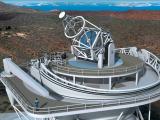
|
03/05/2022
El Telescopio Solar Europeo impulsará la investigación del Sol en Europa La nueva infraestructura, que se presenta en un acto en el CSIC, tendrá un espejo de 4,2 metros de diámetro y una altura de 44 metros, y será el mayor telescopio solar de Europa. Está previsto que se empiece a construir en 2024 en el Observatorio del Roque de los Muchachos, en la isla de La Palma, y podría estar en funcionamiento en 2029 |

|
16/09/2022 - 12:30
SO Colloquium: Sex and gender analysis in research and Innovation This lecture aims to increase researchers’ awareness of the current demands for the inclusion of sex and gender in their research. In fact, several governments and granting agencies, such as the European Commission and the Spanish Agencia Nacional de Investigación (AEI), now require that requests for funding address whether, and in what sense, sex and gender are relevant to the objectives and methodologies of the research proposed. Parallel with... Dr. Capitolina Díaz |

|
01/09/2022 - 12:30
SO Webloquio: Stellar Magnetism and Extra-Solar Space Weather The environment around the Sun and other late-type stars is controlled by magnetic fields. The coronal high-energy radiation (Extreme Ultra-Violet and X-ray photons), the structure and strength of stellar winds, as well as transients such as flares, coronal mass ejections (CMEs), and energetic particle events, are some examples of this magnetic influence. Apart from their direct consequences on the star and its evolution, these phenomena will... Dr. Julián Alvarado-Gómez |

|
23/05/2022 - 12:30
New insight into the magnetism of isolated white dwarfs Many stars evolve into magnetic white dwarfs, but we do not know when the magnetic field appears at their surface, if and how it evolves during the cooling phase, and, above all, what are the mechanisms that generate the field, and why they act on some but not all degenerate stars. Observations may help to find an answer to these questions, but their interpretation is dramatically affected by biases due to target selection and a non-homogeneous... Dr. Stefano Bagnulo |
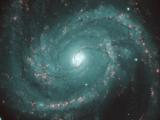
|
27/04/2022
Un atlas de galaxias activas muestra que los supervientos son comunes incluso en las más aletargadas El Instituto de Astrofísica de Andalucía (IAA-CSIC) estudia en profundidad una muestra de LINERs, el tipo de galaxia activa menos luminoso, y halla que en la mitad de ellas se producen supervientos galácticos |

|
27/10/2022 - 12:30
SO colloquio: A new look at the torus of active galactic nuclei The classical picture to explain the observations of active galactic nuclei (AGN) required a geometrically and optically thick torus of molecular gas and dust to obscure the central engine from some lines of sight. For more than two decades, the torus was believed to be a compact (pc-scale), isolated, and rotating structure. Our recent work in the Galactic Activity, Torus, and Outflow Survey (GATOS), using ALMA and high-angular resolution mid-... Dr. Almudena Alonso Herrero |

|
21/09/2022 - 16:30
SO Webloquio: Dwarf Galaxies and the Smallest Supermassive Black Holes Despite traditional thinking, an appreciable population of (relatively small) supermassive black holes may be lurking in dwarf galaxies. Before the last decade, nearly all known supermassive black holes were in the nuclei of giant galaxies and the existence of such black holes in dwarf galaxies was highly controversial. The field has now been transformed, with a growing community of researchers working on a variety of observational studies... Dr. Amy Reines |

|
21/06/2022 - 12:30
SO webloquio: Star-planet plasma interactions and radio emissions Exoplanets are expected to sustain various plasma interactions with their parent star, depending on the stellar and planetary magnetic field strengths and on the sub- or super-Alfvénic wind speed at the planet’s orbit. Three such interactions lead to electron acceleration and subsequent radio emissions in our solar system: magnetized planets hit by the super-Alfvénic solar wind, and the sub-Alfvénic interactions of the unmagnetized moon Io and... Dr. Philippe Zarka |

|
07/07/2022 - 12:30
SO Webloquio: Optical interferometric studies of star and planet formation A first step towards understanding planetary formation is the characterisation of the structure and evolution of protoplanetary discs. Although the large scale disc is understood in some detail, very little is known about the inner few au. In this region, dust grains sublimate, and accretion and ejection take place, affecting the entire disk structure and evolution. In this talk, I will review how optical interferometric observations can... Dr. Rebeca García López |
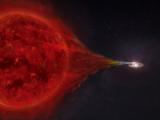
|
14/04/2022
Los telescopios MAGIC detectan la explosión de una estrella “vampiro” El Instituto de Astrofísica de Andalucía (IAA-CSIC) participa en el hallazgo de rayos gamma de muy alta energía procedentes de una nova recurrente en la Vía Láctea. El resultado, publicado hoy en Nature Astronomy, identifica las novas como un nuevo tipo de fuentes de rayos gamma de muy alta energía |

|
03/05/2022 - 12:30
Radio astronomy in the pre-SKA era: What can Apertif do for you? With the Square Kilometre Array still several years away, SKA pathfinder telescopes are already enabling transformational science in radio astronomy with their astounding improvements in field-of-view, sensitivity, spatial resolution, and spectral bandwidth coverage. The APERture Tile In Focus (Apertif) is one such SKA pathfinder: a phased array feed instrument upgrade to the Westerbork Synthesis Radio Telescope that increases the field-of-view... Dr Kelley Hess |
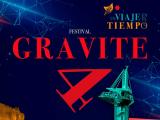
|
07/04/2022
El Instituto de Astrofísica de Andalucía, IV Premio Viajero en el tiempo del Festival Gravite Su director, Antxon Alberdi, recogerá el galardón el próximo 23 de mayo e impartirá una conferencia sobre agujeros negros |
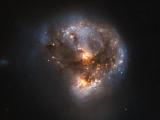
|
07/04/2022
Se halla el megamáser Nkalakatha, que revela una gran colisión de galaxias El Instituto de Astrofísica de Andalucía (IAA-CSIC) participa en el descubrimiento de la emisión en radio producida por una colisión galáctica |

|
14/06/2022 - 12:30
Detailed equilibrium and dynamical tides: impact on circularization and synchronization in open clusters Binary stars evolve into chemically-peculiar objects and are a major driver of the Galactic enrichment of heavy elements. During their evolution they undergo interactions, including tides, that circularize their orbits and synchronize stellar spins, impacting both individual systems and stellar populations. My recent work introduces an accurate implementation of equilibrium and dynamical tides in the stellar population code binary_c, relying... Dr. Giovanni Mirouh |
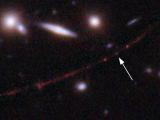
|
30/03/2022
La estrella más lejana nunca vista El telescopio espacial Hubble establece un nuevo récord al captar la luz de una estrella que brilló en los primeros mil millones de años después del Big Bang. El Instituto de Astrofísica de Andalucía (IAA-CSIC) participa en el hallazgo, que aporta una visión detallada de los albores del universo |

|
31/05/2022 - 12:30
SO Webloquio: Empirical and physical properties of Lyman continuum emitters Lyman continuum emitters are galaxies showing escaping ionizing radiation, which thus contributes to ionizing the intergalactic medium. They may be the dominant source of cosmic reionization. I will present an overview of the observations and modeling of low-z analogs of the sources of cosmic reionisation recently discovered. HST observations, including UV spectroscopy with COS and rest-UV imaging with the WFC3, combined with ground-based... Dr. Daniel Schaerer |

|
24/05/2022 - 12:30
Time domain astronomy with future X-ray satellites Accreting black holes emit in X-rays at the wave-band in which THESEUS will be observing (0.3 keV-20 MeV) due to their extreme physical conditions. The softer energy range is devoted to thermal emission from the accretion disc and the harder is due to the existence of a hard X-ray emitting corona (with undefined geometry so far). The importance of one component versus the other gives rise to the diverse state classification of accreting black... Dr. Maria D. Caballero-Garcia |
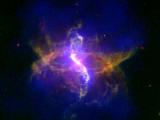
|
23/03/2022
R Aquarii: una estrella simbiótica con rasgos de galaxia activa El Instituto de Astrofísica de Andalucía (IAA-CSIC) participa en el análisis en rayos X de R Aquarii, una estrella doble formada por una estrella gigante roja y una enana blanca. El sistema muestra una morfología muy compleja, donde destaca el chorro bipolar en forma de S que emerge de la enana blanca y una nebulosa extensa que muestra filamentos y cavidades |

|
14/07/2022 - 12:30
A journey into the Perseus cluster of galaxies The central black hole of active galaxies accretes large amounts of matter and powers jets of relativistic particles that can propagate beyond the host galaxy. Radio galaxies are particularly bright at ∼ GHz frequencies, when the accelerated electrons interact with the magnetic field and produce strong synchrotron emission. Such galaxies residing in clusters evolve in a hot, diffuse, X-ray emitting plasma (the intracluster medium, ICM) which is... Dr. Marie-Lou Gendron-Marsolais |

|
26/04/2022 - 12:30
Destroying Planetary Systems Modern astronomy invests a large amount of effort to search and characterise planetary systems around solar-like stars. In particular, at early stages of their formations in proto-planetary disks. However, we barely know much about the capacities of the planets to survive the harsh environments produced by their host stars during their evolution. In this talk, I will describe the effects a planet can produce by helping shape the mass loss of... Dr. Jesús Toala |

|
21/03/2022
Contrapuntos - Enrique Pérez Montero |

|
24/03/2022 - 12:30
Is it possible to simulate time machines in a laboratory? General Relativity is the most succesful theory we have for describing gravitational phenomena. Its range of applicability is vast: from solar system scales to cosmological scales. It is well-known that GR allows the existence of time machines: devices that are able to generate Closed-Timelike-Curves (CTCs). Although these kind of objects are allowed in GR, most researchers believe that they cannot occur on macroscopic scales. However, it is... Gerardo Garcia |
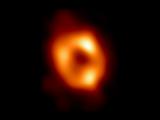
|
20/05/2022 - 11:30
Imaging the supermassive black hole at the galactic center with the EHT We present the first Event Horizon Telescope (EHT) observations of Sagittarius A* (Sgr A*), the Galactic center source associated with a supermassive black hole. These observations were conducted in 2017 using a global interferometric array of eight telescopes operating at a wavelength of λ = 1.3 mm. The EHT data resolve a compact emission region with intrahour variability. A variety of imaging and modeling analyses all support an image that... José Luis Gómez, Rocco Lico, Guang-Yao Zhao, Ilje Cho, Antonio Fuentes, y Thalia Traianou |

|
11/05/2022 - 12:30
SO Coloquio: Stellar clustering connecting the formation and evolution of galaxies to the formation and evolution of us The clustered nature of star formation leaves a long-term imprint on galaxies, stars, and planets. At young ages, stellar clustering subdivides galaxies into individual building blocks undergoing vigorous, feedback-driven life cycles that vary with the galactic environment. These units structure the interstellar medium spatially, dynamically and chemically, and collectively define how galaxies form stars. At old ages, the relics of clustered... Dr. Diederik Kruijssen |

|
12/05/2022 - 12:30
SO Coloquio: The cloud-scale baryon cycle across the nearby galaxy population The cycling of matter in galaxies between molecular clouds, stars and feedback is a major driver of galaxy evolution. However, it remains a major challenge to derive a theory of how galaxies turn their gas into stars and how stellar feedback affects the subsequent star formation on the cloud scale, as a function of the galactic environment. Star formation in galaxies is expected to be highly dependent on the galactic structure and dynamics,... Dr. Mélanie Chevance |

|
19/05/2022 - 12:30
SO Webloquio: Charting the first billion years of our Universe with the Square Kilometre Array The first billion years witnessed the dawn of the first galaxies, eventually culminating in the final phase change of our Universe: the Epoch of Reionization (EoR). Recent observations allowed us limited glimpses into these epochs, improving our understanding of the timing of the EoR. However, we still do not understand the first galaxies and black holes, the vast majority of which are too faint to be seen directly in the foreseeable future.... Dr. Andrei Mesinger |

|
07/04/2022 - 13:00
SO Webloquio: Measuring the Magnetic Fields of Exoplanets with Star-Planet Interactions Planets interact with their host stars through gravity, radiation and magnetic fields. For giant planets orbiting stars within ~20 stellar radii (=0.1 AU for a Sun-like star), magnetic star-planet interactions (SPI) are observable at a range of wavelengths with a variety of photometric, spectroscopic and spectropolarimetric techniques. At such close distances, planets orbit within the sub-alfvénic radius of the star, where magnetic interactions... Dr. Evgenya Shkolnik |
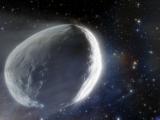
|
14/03/2022
Confirman que Bernardelli-Bernstein es el mayor cometa del Sistema Solar El Instituto de Astrofísica de Andalucía (IAA-CSIC) participa en el estudio con el radiotelescopio ALMA (Chile) del cometa C/2014 UN271 Bernardinelli-Bernstein, que ha permitido determinar su tamaño y su albedo, o reflectividad superficial. Con unos 137 kilómetros, es el mayor cometa conocido, y quizá uno de los más prístinos. |

|
14/03/2022
Premios para nuestras compañeras Pepa Masegosa y Yolanda Jiménez El Ayuntamiento de Almería y el de El Puerto de Santa María conceden respectivos premios a Josefa Masegoda y Yolanda Jiménez por su trayectoria científica. |
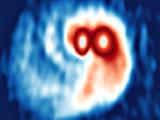
|
10/03/2022
Observan el inicio de la gestación de planetas en un sistema binario de estrellas El Instituto de Astrofísica de Andalucía (IAA-CSIC) encabeza el estudio de la estrella binaria SVS 13, aún en su fase embrionaria. Se ha observado en detalle cómo se reparte el material primigenio que puede dar lugar a tres sistemas planetarios, uno alrededor de cada estrella y otro común, alrededor de ambas |
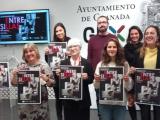
|
09/03/2022
"Entre sillas": seis voces femeninas para analizar la situación de la mujer en distintos ámbitos La actividad, organizada por el Ayuntamiento de Granada y el Instituto de Astrofísica de Andalucía, tendrá lugar el 10 de marzo a las 20.30 horas en el Teatro del Zaidín Isidro Olgoso dentro de las actividades organizadas por el Día Internacional de las Mujeres. |

|
20/04/2022 - 12:30
Turning Trash into Treasure: How OH megamasers are contaminating next-generation HI surveys and what they can tell us about galaxy evolution OH megamasers (OHMs) are rare, luminous masers found in (ultra-)luminous infrared galaxies ([U]LIRGs). The dominant OH masing line at 1667 MHz can spoof the 1420 MHz neutral hydrogen (HI) line in untargeted HI emission line surveys. This ambiguity creates a potential source of “contamination” in HI surveys, particularly for next-generation surveys that will reach groundbreaking sensitivities and redshifts. In this talk, I will present... Dr. Hayley Roberts |

|
31/03/2022 - 12:30
How the intracluster light is going to change your life! There are a huge number of astrophysical phenomena that remain barely studied due to the lack of large, multiwavelength and deep optical surveys. This is the Universe with the lowest density of stars, largely unseen by past large field surveys like the Sloan Digital Sky Survey (SDSS). For instance, only a handful of galaxy clusters have been observed with enough depth to witness the intracluster light (ICL), made up of stars that drift freely... Dr. Mireia Montes |
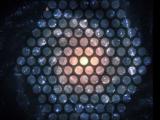
|
04/03/2022
Los primeros resultados del proyecto MASCOT sugieren que las galaxias se “apagan” de dentro afuera El Instituto de Astrofísica de Andalucía (IAA-CSIC) participa en MASCOT, un estudio a gran escala del gas frío en las galaxias, un elemento esencial para entender cómo funciona la evolución galáctica |
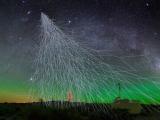
|
22/02/2022
El 14º Maratón de Astropartículas aterriza en La Palma El 14º Maratón de Astropartículas aterriza en La Palma |

|
28/04/2022 - 12:30
SO Webloquio: When artificial intelligence meets astronomy: celestial object census Over the centuries, astronomers have continued to improve the performance of telescopes and the techniques for observing and analysing data. Nowadays, humans are building more and more advanced telescopes with larger and deeper observations, reaching terabytes and even petabytes of data. The Square Kilometre Array (SKA) radio telescope, the most ambitious project in astronomy under construction, is expected to produce more than 700 petabytes of... Dr. An Tao |

|
21/04/2022 - 12:30
SO Coloquio: Constraints on the origin of free-floating planets from the mass function The stellar mass function is a fundamental parameter to constrain star formation models. Although the stellar content has been extensively studied since Salpeter's first work in 1955, the study of the planetary mass regime is only now becoming feasible. I will present a recent census of the Upper Scorpius and Ophiuchus star- forming region, where we identified between 70 and 170 free- floating planets. This is by far the largest sample of... Dra. Núria Miret Roig |

|
22/02/2022
Vislumbran la estructura del agujero negro supermasivo del centro de nuestra galaxia El IAA-CSIC encabeza un trabajo que revela la forma casi circular de Sagitario A* (Sgr A*), el agujero negro supermasivo situado en el centro de la Vía Láctea. La forma indica que el eje de rotación del flujo de materia que rodea al agujero negro (o un posible chorro) puede estar apuntando hacia la Tierra |

|
14/02/2022
Los púlsares podrían esconder una de las claves para comprender cómo viajan los rayos cósmicos El Instituto de Astrofísica de Andalucía (IAA-CSIC) encabeza un trabajo que analiza el papel de los halos de rayos gamma en torno a los púlsares para comprender cómo se desplazan los rayos cósmicos |
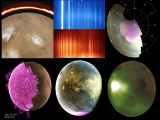
|
17/03/2022 - 12:30
Surprises from MAVEN at Mars: Aurora, meteor showers, and a new water loss paradigm The Mars Atmosphere and Volatile EvolutioN (MAVEN) spacecraft carries the Imaging Ultraviolet Spectrograph (IUVS) to study the Mars atmosphere and atmospheric escape. After more than two Mars years in orbit, IUVS has gained new insights on key phenomena at Mars including dayglow, nightglow, aurora, meteor showers, clouds, solar-planetary interactions and atmospheric evolution. In this presentation, I will highlight three key results... Dr. Nick Schneider |

|
09/02/2022
Contrapuntos - Pepa Masegosa |

|
08/02/2022
Día Internacional de la Mujer y la Niña en la Ciencia 2022 El Instituto de Astrofísica de Andalucía se suma a la celebración del Día Internacional de la Mujer y la Niña en la Ciencia, que busca visibilizar la labor científica de las mujeres y fomentar las vocaciones en las niñas |

|
02/06/2022 - 12:30
SO Coloquio: The Antikythera Mechanism and the Mechanical Universe The Antikythera Mechanism. An astronomical calculator and display device found in a first century BCE shipwreck, it is mechanically more sophisticated than anything known from the subsequent millennium. I want to argue that we should be showing admiration rather than amazement, and that the Mechanism fits rather well into its historic context. But this fit has major implications for the development of humanity’s view of the Universe. Prof. Michael G. Edmunds |
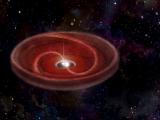
|
23/06/2022 - 12:30
Disks around evolved binaries: do they form second-generation planets? Most of the planets are formed around young stars. But can they also form around dying stars? The origin of the diversity and complexity of the detected exoplanetary systems stems from how they form in protoplanetary disks. These disks are intensively studied around young stars thanks to the high-angular resolution provided by recent instruments (VLT, ALMA). However, similar disks are also found around evolved stars, namely post-AGB binaries,... Dr. Jacques Kluska |
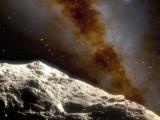
|
01/02/2022
Detectan el segundo asteroide troyano alrededor de la Tierra Los troyanos son asteroides que comparten órbita con un planeta en torno a sus puntos estables de Lagrange, situados sesenta grados por delante y detrás del planeta en su órbita. Muy estudiados en otros planetas, como Júpiter, que cuenta con varios miles, hasta ahora solo se había hallado uno alrededor de la Tierra |

|
21/03/2022 - 01/04/2022
PySnacks for beginners Online |

|
19/01/2022
La imagen con mayor resolución de la galaxia OJ 287 sugiere que alberga un agujero negro supermasivo binario El Instituto de Astrofísica de Andalucía (IAA-CSIC) encabeza un trabajo que combina observaciones de radiotelescopios en tierra y en el espacio para estudiar las regiones centrales de la galaxia OJ 287 |
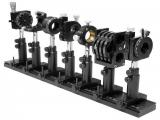
|
07/02/2022 - 18/02/2022
SO Instrumentation School IX. Opto-mechanical systems and mechanical design of IR instrumentation Granada |